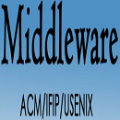Work on Local Dynamic Maps (LDM) implementation is still in its early stages, as the LDM standards only define how information shall be structured in databases, while the mechanism to fuse or link information across different layers is left undefined. A working LDM component, as a real-time database inside the vehicle is an attractive solution to multi-ADAS systems, which may feed a real-time LDM database that serves as a central point of information inside the vehicle, exposing fused and structured information to other components (e.g., decision-making systems). In this paper we describe our approach implementing a real-time LDM component using the RTMaps middleware, as a database deployed in a vehicle, but also at road-side units (RSU), making use of the three pillars that guide a successful fusion strategy: utilisation of standards (with conversions between domains), middlewares to unify multiple ADAS sources, and linkage of data via semantic concepts.
翻译:地方动态地图(LDM)实施工作仍处于早期阶段,因为LDM标准只界定了如何在数据库中构建信息,而不同层次的集成或连接信息的机制则没有界定。LDM部分作为车辆内部的实时数据库,是多ADAS系统的一个有吸引力的解决方案,该系统可以为作为车辆内信息中心点的实时LDM数据库提供材料,向其他组成部分(例如决策系统)披露有引信和结构化的信息。在本文中,我们描述了我们采用的方法,即使用RTMaps中间软件作为在车辆内部署的数据库,同时在路边单元(RSU)实施实时LDM组件,利用三个支柱指导成功的融合战略:利用标准(在区域之间转换)、用于统一多种ADAS来源的中间工具,以及通过语义概念将数据连接。





